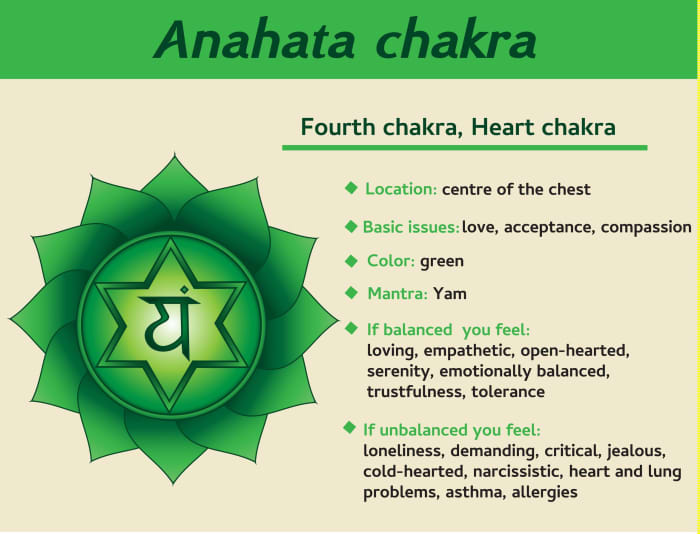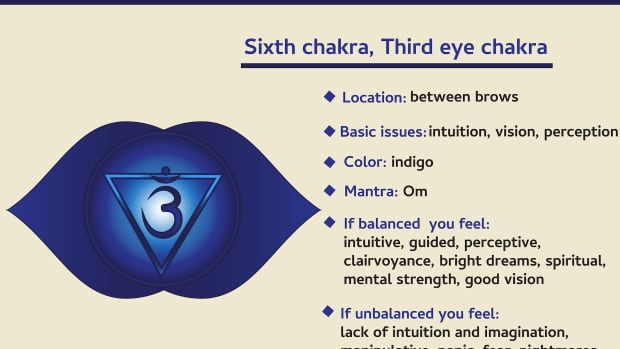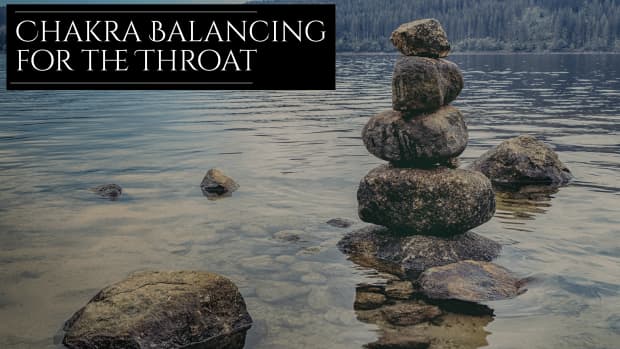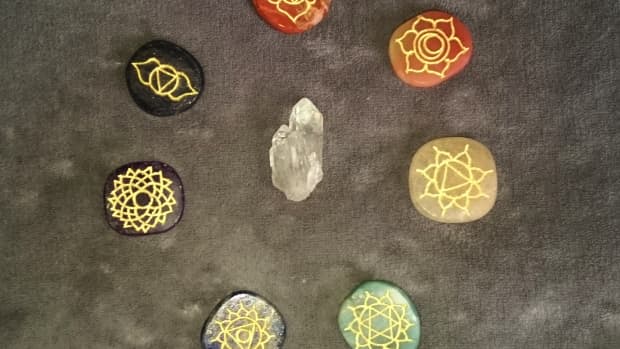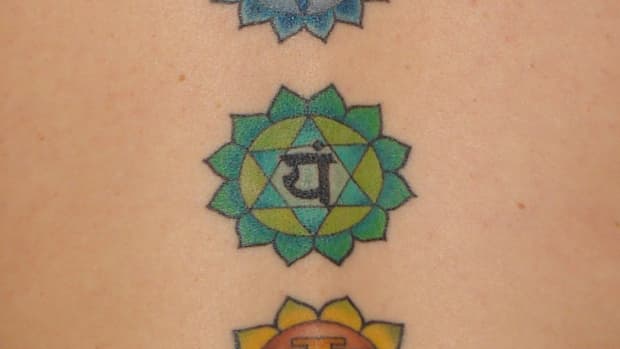How to Awake the Anahata Chakra
The repetition and deep awareness of the mantra, also called Ajapa Japa, is a straightforward way to awaken your Anahata chakra. You must continue this practice unless it becomes a part of your conscious awareness.
Bhramari Pranayama is another crucial practice for the Anahata chakra. It is more of meditation rather than a form of Pranayama. Unlike other Pranayama practices, Bhramari doesn’t control the Pranic forces directly.
Anahata chakra is also termed as the heart chakra. It is often substituted with ‘the caves of bees’ and ‘the center of eternal sound.’ While practicing Bhramari, bees’ humming sound is produced. This enhances mental and emotional peace. It is also quite effective in cardiac disorders.
This chakra is purely meant for Bhakti and devotion. It awakens as per your devotion to your guru or personal deity, whether they are formless or present in front of you. This will help you visualize and learn the spiritual knowledge of the universe.
All the yogic techniques, when done with complete devotion, lead to the awakening of the Anahata chakra. You can learn more about Bhakti yoga through various books available on the Internet. The most recommended one is by Radhanath Swami called ‘The Journey Within: Exploring the Path of Bhakti.’
Preliminary requirements
Following asanas are highly effective in purifying the Anahata chakra to ensure its permanent awakening. You should perfect these asanas before proceeding with the next practices:
- Baddha padmasana (Locked Lotus Posture)
- Dhanurasana (Bow Pose)
- Gomukhasana (Cow Face Pose)
- Kandharasana (Shoulder Pose)
- Matsyasana (Fish Pose)
- Sarpasana (Snake Pose)
- Shalabhasana (Locust Posture)
- Sirsasana (Headstand Pose)
- Supta Vajrasana (Reclining Diamond Pose)
1. Focusing on the Chakra and Kshetram Location
- Place a finger on the center of your chest. This is Anahata chakra Kshetram.
- Place the finger of another hand on your spine leveled with the Kshetram. This is the actual location of the Anahata chakra.
- Press both the fingers deeply for a minute, then remove them.
- You will feel the continuance sensation at that center.
- Practice this for a few minutes along with the mantra.
2. Purifying the Anahata Chakra
- Assume the sitting posture, Padmasana, or Siddhasana.
- Take long and deep breaths
- Observe the expansion and contraction of your chest for a few minutes.
- Observe your breath passing through your chest area and Anahata chakra.
- When the chest expands, your breathing is going through the chest to the Anahata chakra.
- When the chest contracts, your breath is flowing from Anahata to the chest and finally out of the body.
- Practice this breathing exercise at least for 5 minutes along with the mantra.
3. Bhramari Pranayama (Bee Breathing Technique)
Bhramari is a Sanskrit word for ‘Bee.’ That’s why this is called humming breath or bee breathing technique. It is quite simple to practice. Here is a step-by-step guide:
- Sit in a meditative posture.
- Plug your ears with the index fingers.
- Keep your back straight and face forward.
- Close your eyes and don’t strain.
- Keep your teeth a bit separated and mouth closed. This way, your brain can experience the vibration more clearly.
- Take long and deep breaths.
- When breathing out, produce the humming sound in sync with the exhalation. There’s no need for a loud sound.
- The important point is to gain sound awareness in your head.
- Your exhalation needs to be slow and controlled.
- When exhalation ends, stop the humming sound and breathe in.
- Keep your ears plugged and eyes closed.
- Repeat the humming sound with the next exhalation.
- Practice it for 5 or more minutes.
4. Ajapa Japa Meditation
- Sit in Siddhasana or Padmasana.
- Close your eyes and focus your awareness on your breathing.
- Don’t try to control anything, not even your breath.
- Act as a witness to your breathing process.
- Now notice the sound of inhalation and exhalation coming in the form of 'So' and 'Ham' respectively.
- This is the natural mantra: 'So-Ham' (inhalation-exhalation).
- You must have a sound awareness of your breathing and this natural mantra.
- Relax completely and not even strain a little.
- Don’t lose your awareness even for a moment.
- Don’t be bothered by your thoughts and feelings. Let them come and go without any discussion in your mind.
- Now move a little deeper and observe the psychic breath flowing from your navel to throat and vice-versa.
- Maintain the breath awareness passing through your psychic passageway producing the sound of 'So-Ham'.
- Practice this meditation for at least 10 minutes or more.
You can practice Ajapa Japa meditation at any time of the day, but do it for at least 10 minutes. It must be continued for at least a month. The recommended time is early morning or at night before going to sleep.
5. Going Into the State of Deep Meditation
- Sit in Padmasana or Siddhasana.
- Close your eyes and relax your body.
- Focus your awareness in the throat area for some time.
- Now observe its ingoing flow downwards from the throat.
- Don’t concern about the outgoing breath, your attention must solely be given to the ingoing breath through your throat to the diaphragm.
- Your breathing causes the rise and fall of your muscles, separating the chest and lungs from the abdominal organs.
- With each inhalation, your lungs, and navel expand.
- With each exhalation, your abdomen contracts, diaphragm rises, and lungs are completely emptied.
- Add the rise and fall of the diaphragm to your awareness. The diaphragm operates within the space i.e. 'Akasha.' This means, raise your awareness to involve the space element in your consciousness.
- Feel the filling up of your diaphragm and the entire body with each inhalation. This awareness is directly related to your heart space.
- Now, put your full awareness in the contraction and expansion of your heart with the natural breath.
- Understanding the breathing in and out is only the basics. You need to understand the whole space within you.
You must delve into how this wide space, especially the one present in your heart, contracts and expands with the pace of the natural breath. Keep your breath spontaneous and natural. Don’t reform it in any other way. It is very important for you to gain full awareness of your heart space.
When your awareness is constant and balanced, you may start to manifest certain experiences and visions. You don’t have to force yourself to visualize anything. It all comes by itself. There are three stages of awareness:
- Feeling the breath responsible for filling up the heart space.
- Sensing the expansion and contraction of the space due to the breathing.
- Visualizing the calm scene of still lake and blue lotus. This arrives naturally when you maintain constant deep awareness.
Now, withdraw the awareness from your heart and focus on the natural flow of breath in your throat. Concentrate here for at least 5 more minutes. Chant the mantra Om three times. Let the sound of the mantra cover your awareness completely. For some time, carefully pay attention to the inner vibration of the sound. After a while, release your pose and open your eyes.
If you did the meditation as mentioned here, then you have achieved a state of deep awareness. Amidst the commotion of daily life, this state is very tough to achieve. You need to practice it regularly to see the results.
Conclusion
You must practice these yogic techniques for a month to awaken the Anahata chakra. After the successful completion, you can proceed further to awake the Vishuddhi chakra.
You should also continue with the practices related to the Ajna, Mooladhara, Swadhisthana, and Manipura chakras. If there’s a shortage of time, then you must at least perform these important exercises daily.
- For Ajna - Trataka and Shambhavi Mudra
- For Mooladhara - Moola Bandha and Nasikagra Mudra
- For Swadhisthana - Vajroli/ Sahajoli Mudra
- For Manipura - Uddiyana Bandha and Nauli Kriya
Falling back of the awakened chakra is somewhat possible until you have made it to the Sahasrara. So, it is very important to continue with all your practices.
This content is accurate and true to the best of the author’s knowledge and is not meant to substitute for formal and individualized advice from a qualified professional.
© 2020 Prachi Sharma

